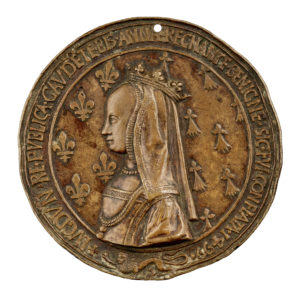The Frick Collection has just received the largest gift in its history: a collection of portrait medals from the Renaissance onwards given by Stephen K. Scher and Janie Woo Scher. To celebrate this donation, a selection of 100 of these medals will be on view today through September 12, 2017. The exhibition is organized by Aimee Ng, associate curator at the Frick, and Stephen K. Scher.
A Different Kind of Portrait
When we think of portraits, paintings are probably the first art form that comes to mind. Yet medals are another significant type of portrait that was invented during the Italian Renaissance and flourished across Europe for four centuries.
I recently became more familiar with portrait medals while translating art historian Diane Bodart‘s book Pouvoirs du Portrait sous les Habsbourg d’Espagne. Typically, the front of the medal (called the obverse in English and the avers in French) bears an image of the person, usually in profile, while its back (the reverse in English or the revers in French) presents biographical imagery, such as a coat of arms or personal allegory. Inscriptions declare the sitter’s titles, qualities, or motto. Some of the medals in the Scher Collection feature a husband on one side and a wife on the other, such as this medieval-looking French portrait medal from 1499:

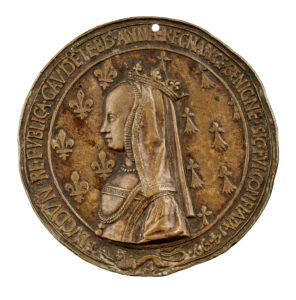
Portrait medals offer certain advantages over painted or sculptured likenesses. With their inscriptions and reverses, they typically provide more information about the person depicted than paintings or sculptures. In addition, their small size and durable materials (including bronze or copper alloy, lead, silver, and gold) make them more resilient than paint or stone. As eminently portable objects, they historically had a broader reach than portraits in other media, as they could be given to friends or family members. Additionally, rulers and nobles might give them as tokens to those whose favor or support they sought to gain.
Techniques for Making Medals
As the Frick press release explains, in general, portrait medals are made using one of two techniques: casting (pouring molten metal into a mold) or striking (using physical force to shape a blank disk between two dies). The first Renaissance medals were cast using a process similar to that used to make bronze sculpture. Look at the deep relief on both sides of this cast medal from 1580:
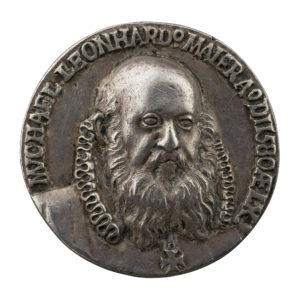
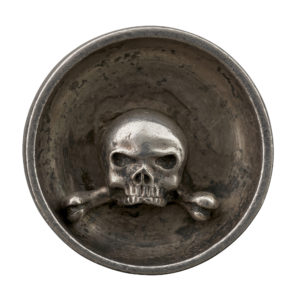
Striking, the technique used since antiquity to form coins, became popular for making medals in the early sixteenth century with the development of the screw press (adapted from the printing industry), and allowed for refinement of detail, higher relief, and larger size.
The First Medal Maker
The first portrait medal has historically been attributed to the painter Antonio di Puccio Pisano, called Pisanello, who, while working in Ferrara for the Este court, produced a medal in about 1438 depicting John VIII Paleologus, the Byzantine emperor.
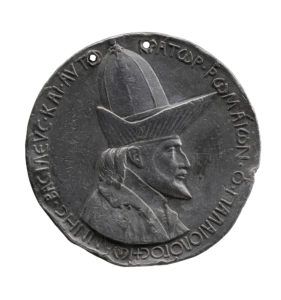
Pisanello was very prolific, casting at least 26 portrait medals of contemporary individuals that translated into metal the celebrated naturalism he achieved in his painted portraits. Here is the reverse of his medal depicting Cecilia Gonzaga, an elegantly composed scene where he celebrates her chastity by showing her taming a unicorn, something only a virgin could achieve according to medieval tradition:
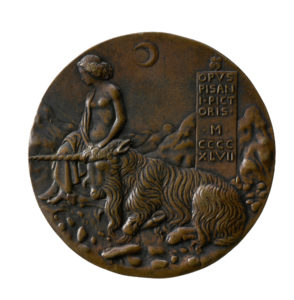
Cultural Differences in Various Countries
- Italy: Following the tradition begun by Pisanello, medals produced in Italy are characterized by idealized and, at the same time, naturalistic portraiture in classical style, with inventive reverses that celebrate individuality. (For more on Italian Renaissance portraits that could simultaneously invoke an ideal and represent a recognizable individual likeness, see the cogent discussion in Diane Bodart’s book when it appears in English!)
- Germany: Medals by German artists tend toward exacting portraiture and typically carry heraldic imagery on the reverse, in contrast to the individualized reverses of Italian medals.
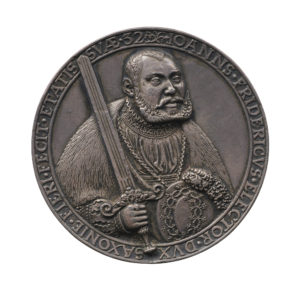
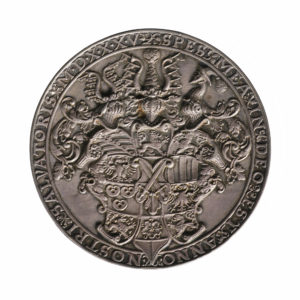
- France: Portrait medals in France largely followed Italian models until the end of the 16th century, when Guillaume Dupré, sculptor to Henri IV, began to cast medals and medallions (essentially, large medals) characterized by subtlety and precision.
- The Netherlands: The art of the portrait medal flourished during the Dutch Golden Age, and artists in 17th-century Amsterdam favored a technique of casting two thin shells and soldering them together. The majority of Dutch medals of the period relate to events and individuals associated with the struggle for independence from Spain.
- England: England did not produce a school of renowned native portrait medalists until the 18th century. English medalists developed in large part from the tradition of coin production, and thus striking was the favored technique. The English medals therefore tend to be flatter with less dramatic relief than many of the European ones.

